DJI Action 2
Two-minute review
If it isn’t a GoPro, is it really an action camera? DJI categorically put that question to bed with the launch of the DJI Osmo Action in 2019, which took GoPro’s winning formula, whacked on a display for vloggers on the front, and added its own Rock Steady stabilization to the mix.
With no successor to the Osmo Action last year, we'd concluded that action cams might have been a one-and-done effort from the drone and gimbal giant. Finally, though, we can confirm that DJI was just biding its time. This is the modular, metal, mini DJI Action 2, and its army of accessories.
Hardly a cheap and cheerful action cam, the DJI Action starts at $399 / £349 / AU $609, which is slightly less than a GoPro Hero 10 Black ($399 / £379 / AU$599.95) with a GoPro Subscription.
The DJI Action 2 sports one of two modules in the box, either a front display-with- battery, or just the battery. What’s more, the camera has 32GB storage on board. To bump that up, you’ll need it connected to a module, which takes microSD cards up to 256GB.
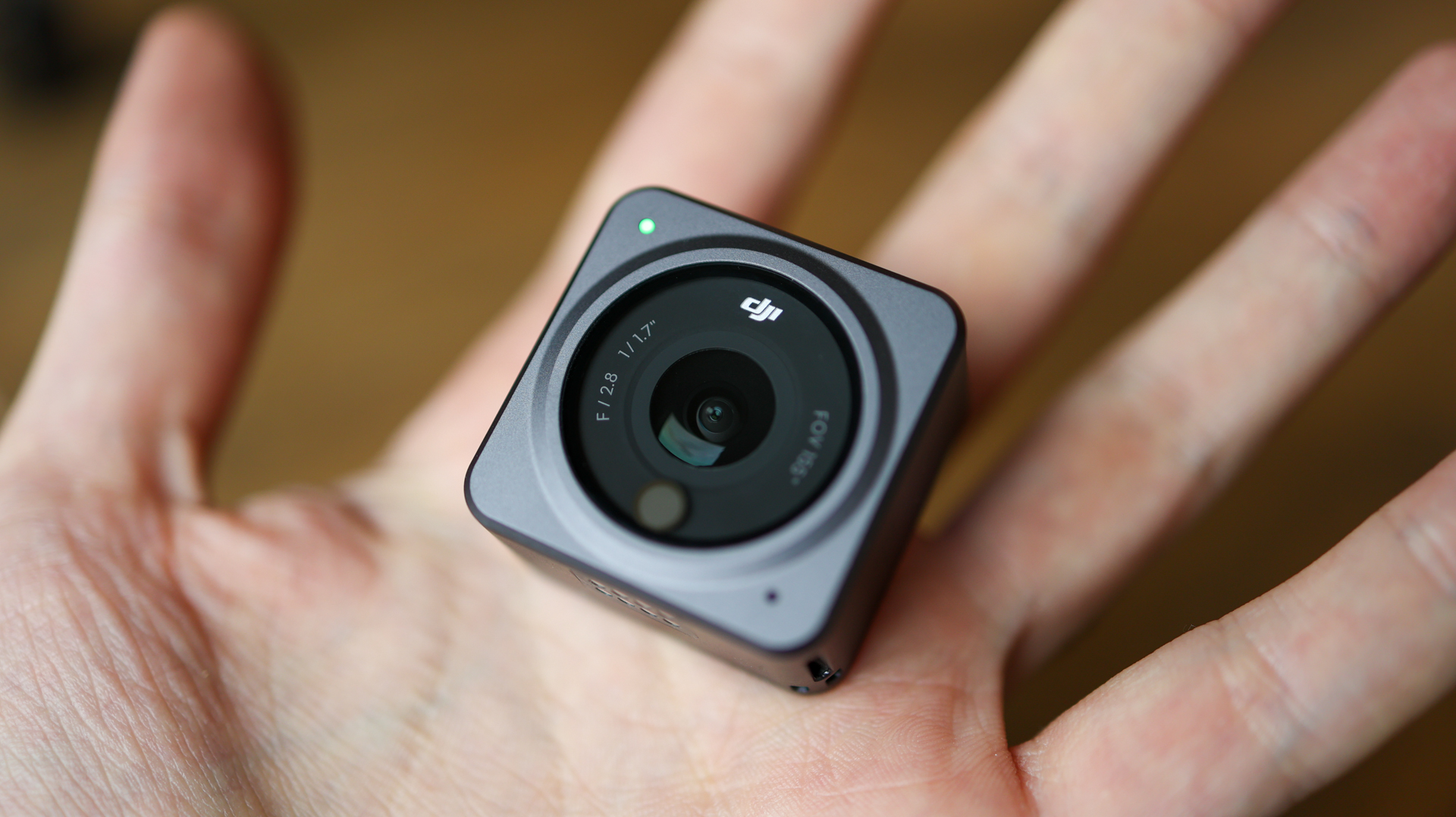
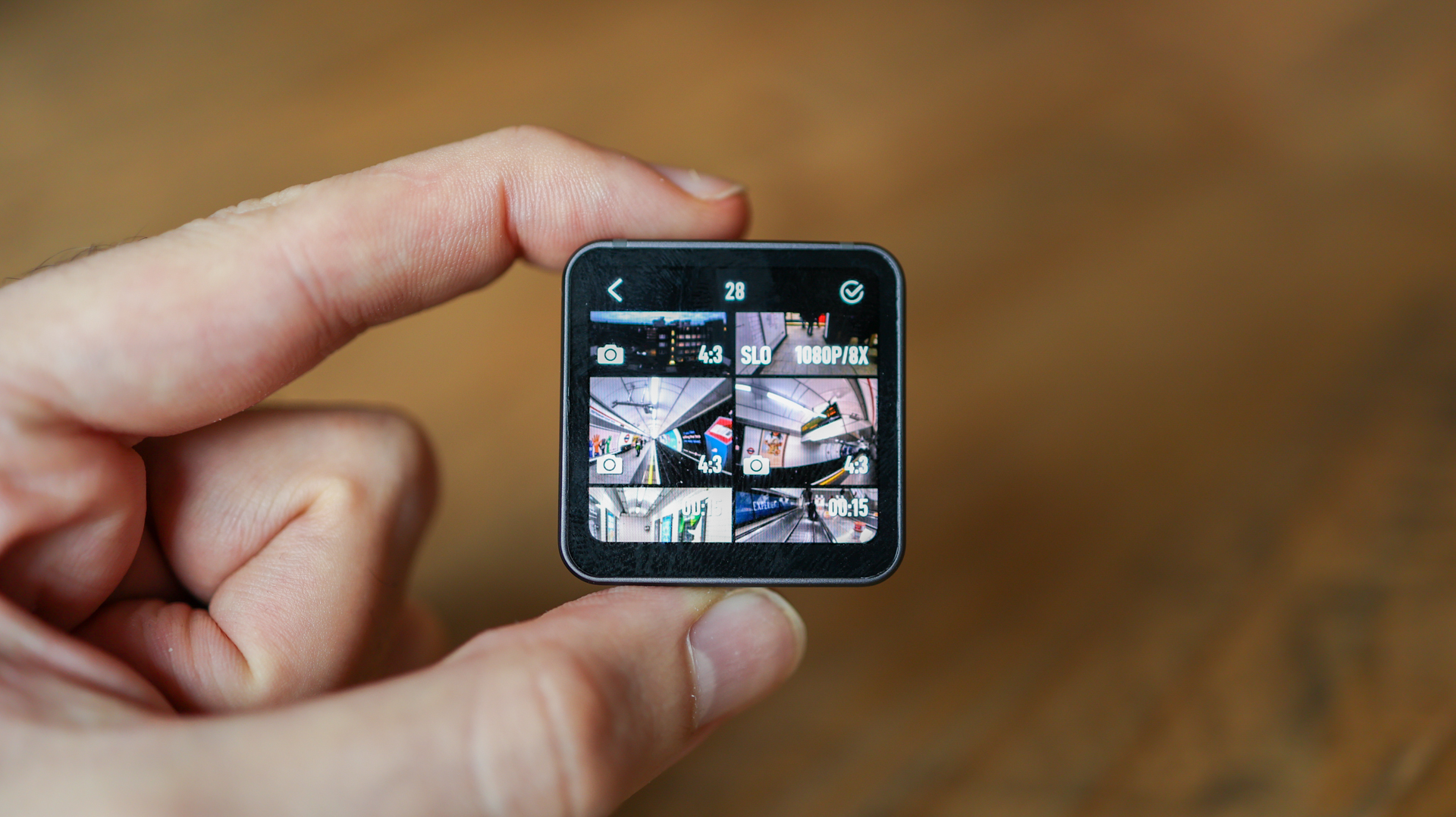
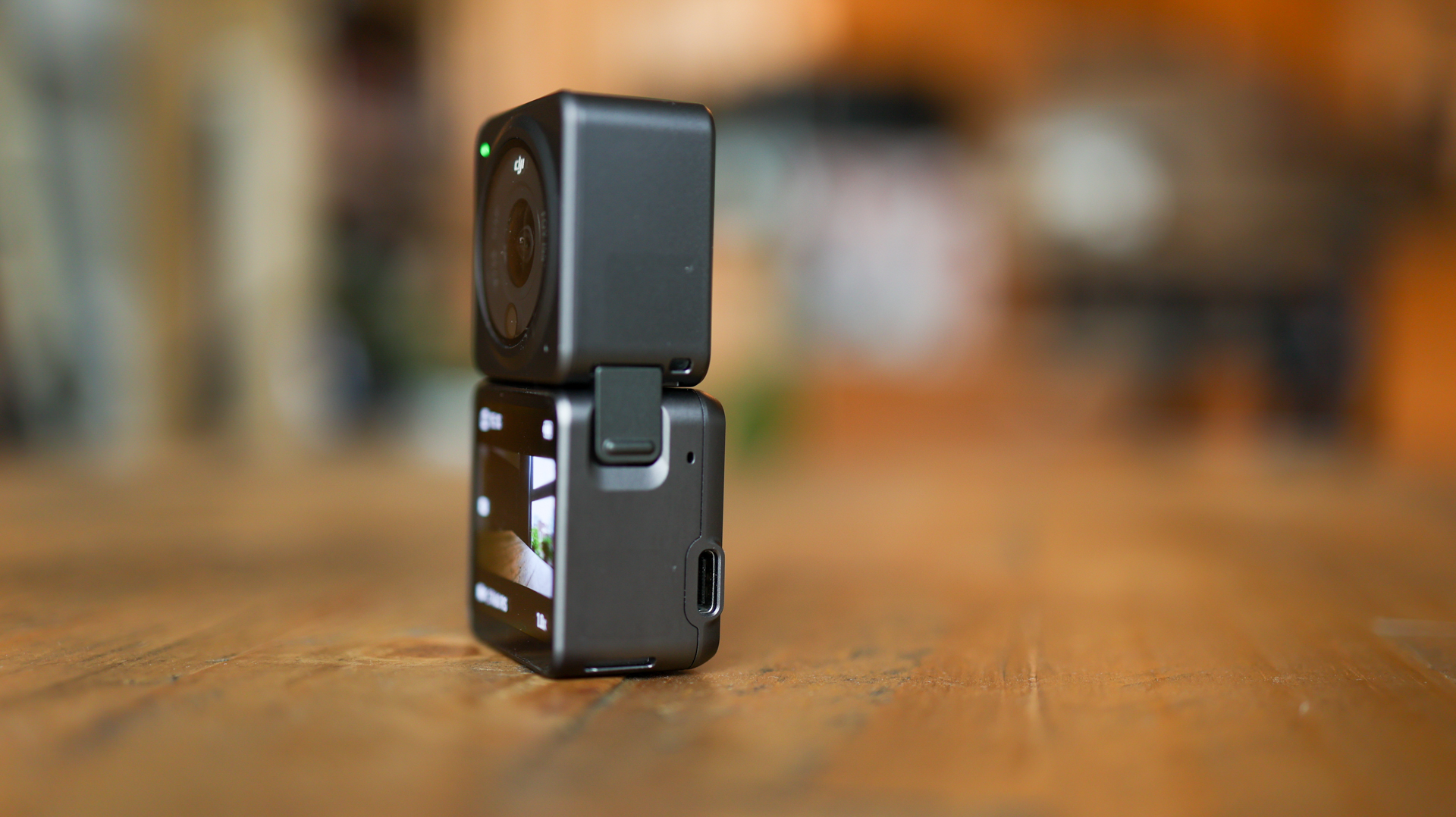
Able to shoot video at up to 4K, the DJI Action can’t climb as high as the GoPro Hero 10 Black when it comes to resolution. But what it lacks in pixels, it makes up for in horizon leveling – or as DJI calls it, Horizon Steady. The upgrade to RockSteady, DJI’s image stabilization bests GoPro’s 45-degree leveling by allowing virtually 180-degree tilts without affecting the image orientation. It only works at 1080p and 2.7k, but it’s still a handy party trick that’s practically useful for anyone on a boat tilting from side to side.
Video quality is fine in bright environments. Footage from the DJI Action 2 seldom took our breath away, though it is versatile, with a range of shooting modes and an official macro lens accessory. The camera leans towards down-playing saturation, which can result in muddy looking footage, especially in low light. However, this can usually be boosted in an edit.
The Action 2’s battery life is decent when matched with a power module, but the standalone cube probably won’t make it through more than half a day of occasional clip shooting. What’s more, it also overheated a fair bit, with recording capped at roughly five minutes at high resolutions as a result.
What the Action 2 does deliver is an extremely wide-angle and smart design though. It’s a fraction of the size of the Hero 10 Black, so could be perfect for anyone who wants the most diminutive action camera around. It won’t be for everyone, and this time, GoPro wins out as the safer all-round option, particularly for vloggers. But for gadget lovers who want the best looking, most novel, premium-feeling action camera around, they don’t come more striking than the modular DJI Action 2.
DJI Action 2 price and release date
Pricing for the DJI Action 2 will depend on the kit you go for – the camera is available in a Power Combo (from end of November), which pairs the camera body with a battery module, and a Dual-Screen Combo (out now), which features a front display module instead. The DJI Action 2 Power Combo costs $399 / £349 / AU $609, while the DJI Action 2 Dual-Screen Combo costs a bit more, at $519 / £455 / AU $799.
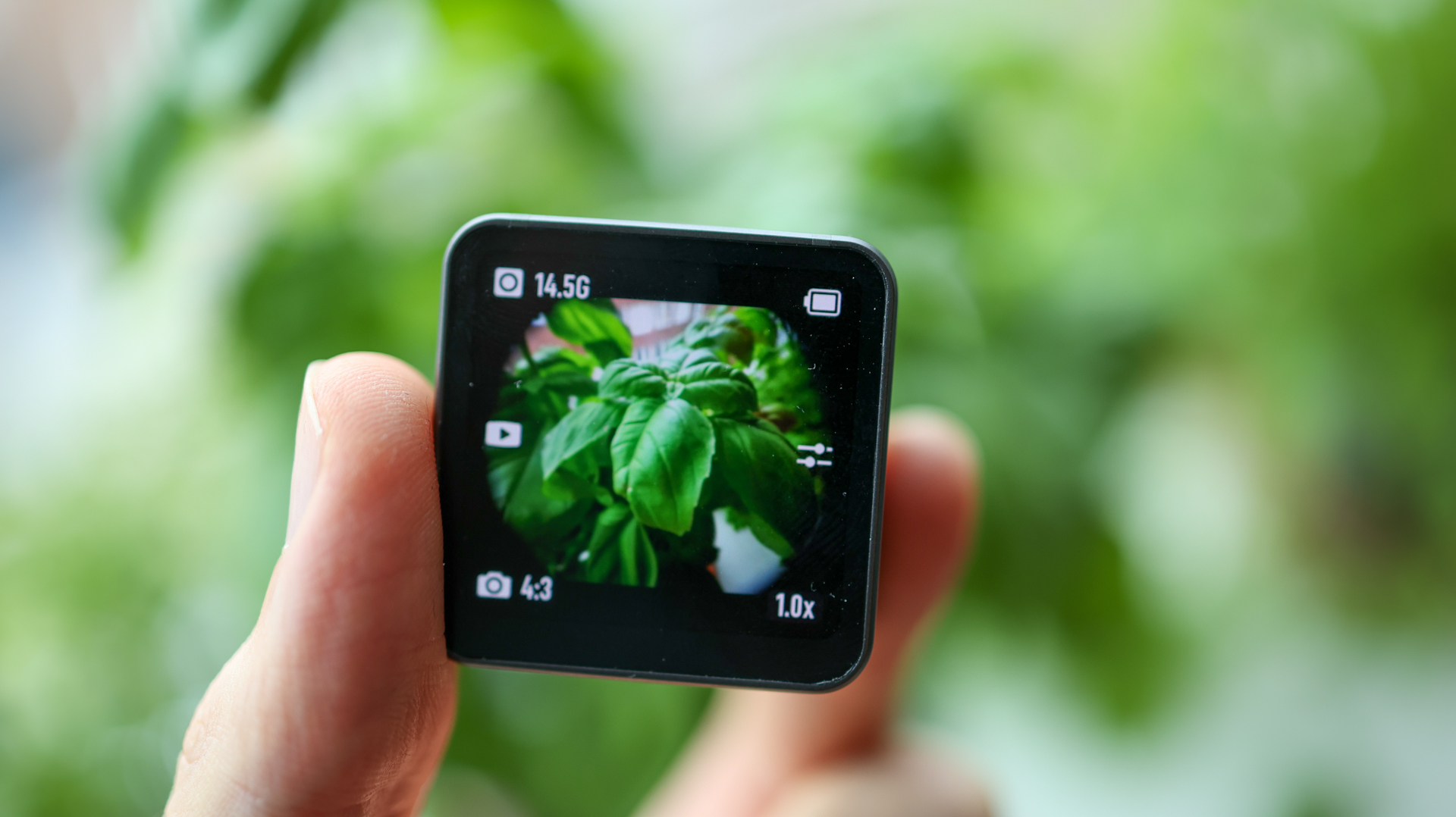
You can also pick up a host of accessories for the camera, and the magnetic mounts are probably one of the best things about the camera, making it much more quick-release than a GoPro. The magnetic Adapter Mount will set you back $25 / £19 / AU $29, the Remote-Control Extension Rod costs $75 / £50 AU £89, the waterproof case costs $65 / £45 / AU $79, and the Magnetic Ball-Joint Adapter Mount costs $39 / £25 / AU $49.
If you want to pick up the Front Touchscreen Module individually, that’ll set you back $169 / £155 / AU$249, and the Power Module costs $75 / £50 / AU $89. The camera also supports a Macro Lens that magnetically clips onto the Action 2, and you can expect to pay $79 / $50 / AU $89.
Design and screen
DJI calls the Action 2 modular and wearable. For a GoPro-sized camera, wearable would have been a bit of a stretch, but fortunately the Action 2 is significantly smaller than the Hero 10 Black.
The core module is a square 39 x 39mm cube, with a depth of 22.3mm. At just 56g, it’s also very light. The Action 2 ships with a neck strap that magnetically adheres to the dinky camera, and in turn, calling it wearable out of the box isn’t too much of a stretch.
DJI keeps the design of its Action 2 simple. On the front is a bold lens with a few words surrounding it: 155-degree field of view, f/2.8, and 1/1.7in; all specs that are highly competitive to GoPro’s Hero 10 Black.
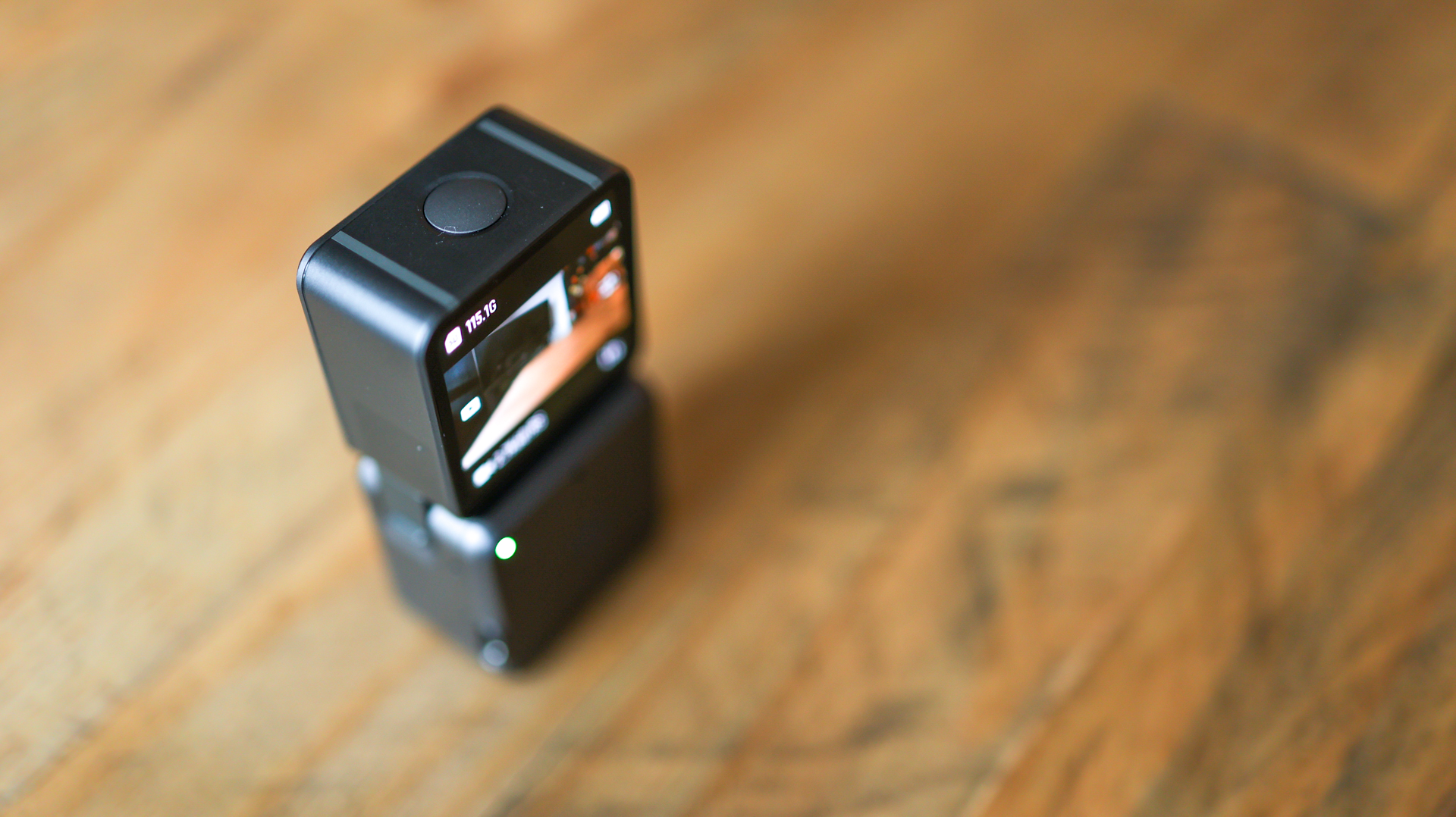
On the top of the Action 2 is a sole button, while at the base are Pogo connector points. Finally, around the back is a 1.76-inch screen, which is tiny set against that of a GoPro, but is also very sharp, with a pixel density of 350 pixels-per-inch and a resolution of 445 x 424.
Another boon for the Action 2 is its OLED screen, which delivers much deeper dark colors, and richer saturation than the comparatively washed-out Hero 10 Black display. With its touch-optimized menu, we didn’t find the Action too fiddly when interacting with it, but we did wish its display was bigger when previewing our video or playing it back.
Like the Hero 10 Black, the DJI Action 2's main module is waterproofed at up to 10 feet, which is roughly the same 33 meters as its main competition. To go down to 60 feet, you'll need to whack it in its case (sold separately) – and this is unfortunately also necessary to water-proof its Power Module and Front Touchscreen Module, which aren't water-resistant without that case.
Modular mounting – how it works
If you’re wondering how the DJI Action 2 attaches to its modular mates, it works with magnets and clamps. The base of the Action 2 and the top plate of the module feature strong magnets that maintain a serious attraction.
As they draw closer to one another, the module’s two metal spring-loaded clamps clasp onto the base of the Action 2, and as if by magic, there’s no separating them unless you dexterously pinch both sides perfectly and pull the components apart.
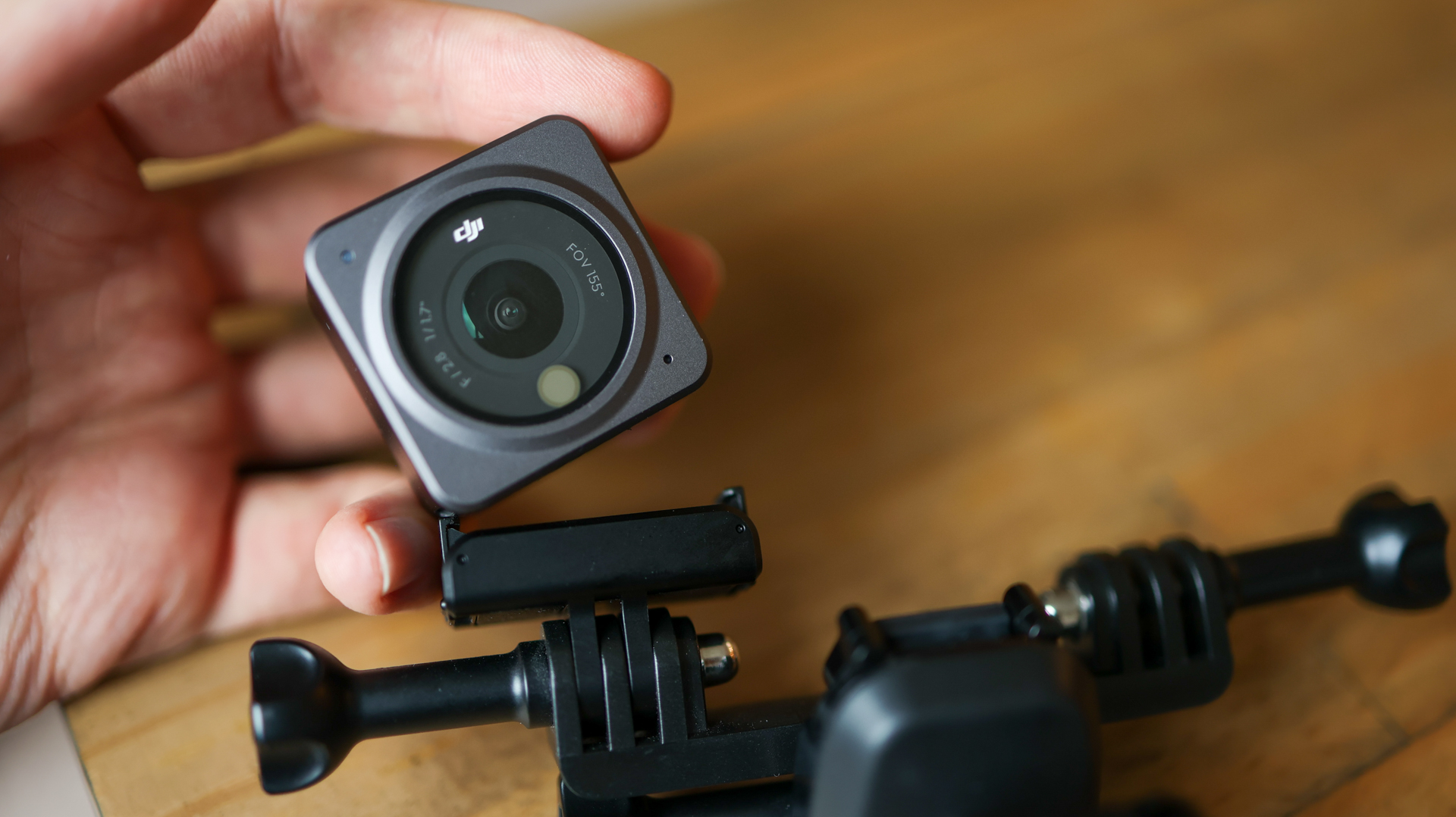
The only accessory that relies exclusively on the magnets (not the clamp) is the neck strap that ships with the Action 2 – and while we had no accidental dismounts, we wouldn’t use it when mounting up ahead of rollercoaster recording or blasting down some rapids.
One thing we absolutely love about the Action 2 is how easy it is to clamp it on and off its mounts. There’s no screwing a fiddly screw that can go missing, and no need to struggle with traditional GoPro mounts. If you pick up an Action 2, we’d wholeheartedly recommend also grabbing as many magnetic adapter mounts as you need for all your bits – if you can justify the expense ($25 / £19 / AU $29 each), of course.
Power or Dual-Screen Module?
How much do you really fancy yourself a vlogger or want to shoot selfie video? If the answer is very much, and all the time, you might want to grab the pricier Dual-Screen Combo, or the Display Module separately. It puts the exact same screen that the Action 2 has on its back on the front of a clip-on compadre that lives below the camera module.
The second screen is fully touch-sensitive and just as dinky as the main one. We would have loved to have seen a bigger screen module available that could have been clipped on whichever way, but this aside, the front display is still a handy tool, especially given the extreme wide-angle the Action 2 captures with. Using the front display, we were able to make sure our face stayed away from the barreled edges of the frame.
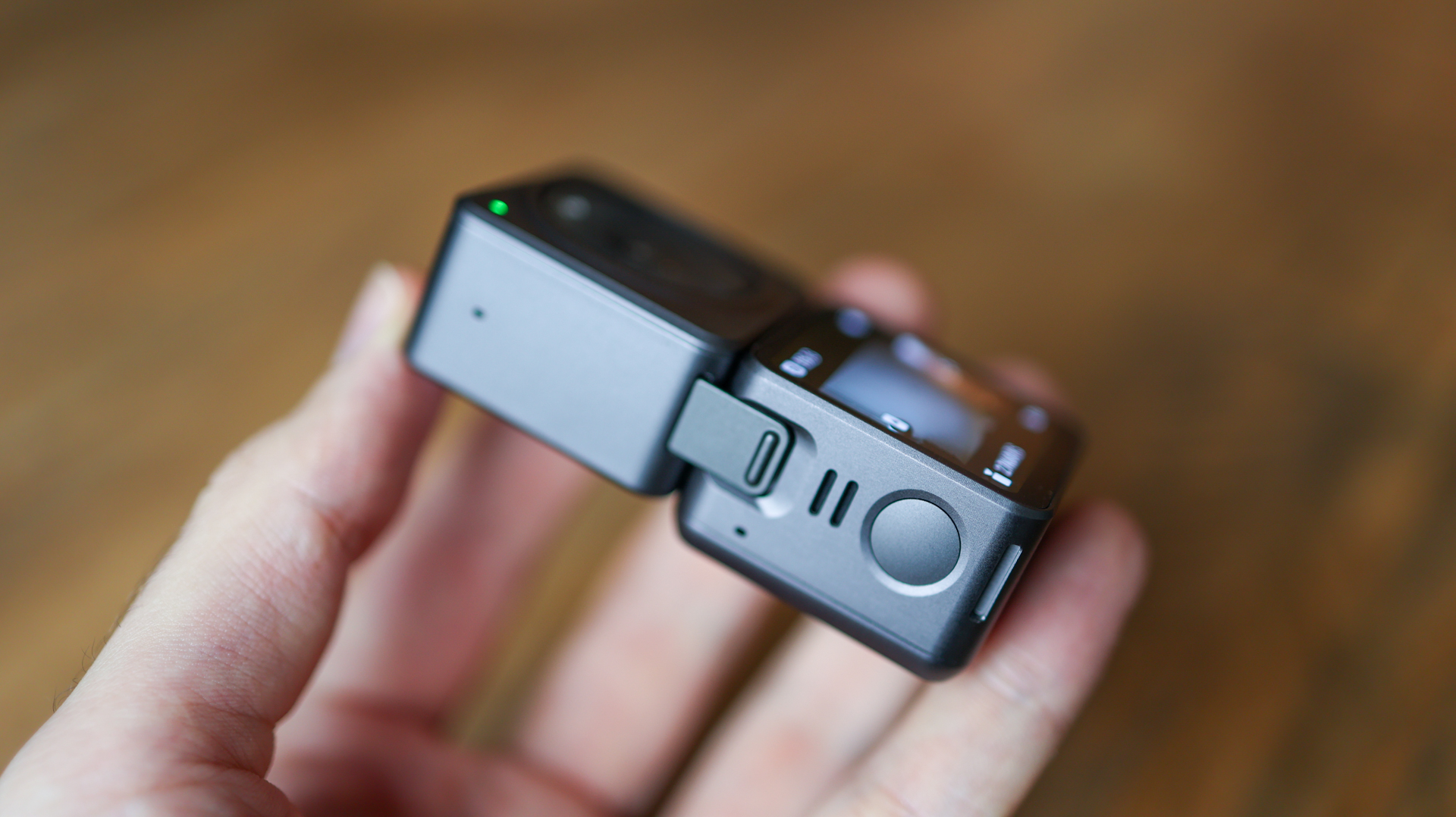
Both the Power and Dual-Screen modules feature a 1,300mAh battery that charges and powers the DJI Action 2. They also pack a microSD card slot, which supplements the 32GB storage on the Action 2 itself, and weigh roughly 60g.
Unfortunately, neither module is waterproof, so if you know you’ll want to take the Action 2 for a dunk and need that SD card access, you’ll want to pick up a dedicated case, which costs $65 / £45 / AU $79.
Specs and resolutions
The DJI Action 2’s camera features a 1/1.7-inch CMOS sensor with a wide 155-degree field of view and an f/2.8 aperture. Its ISO range starts at 100 and climbs to 6400 across photo and video.
Unlike the Hero 10 Black, the Action 2 doesn’t capture video at up to 5.3K. In fact, it caps out at 4K (4:3), and across stills, video and horizon leveling, the camera pushes you to shoot at lower resolutions. We spoke with DJI about this, and were told that the real-world benefit of resolution boost wouldn’t actually improve the output from an action camera like the Action 2, and DJI didn’t want to inflate the resolution artificially without any real-world benefit.
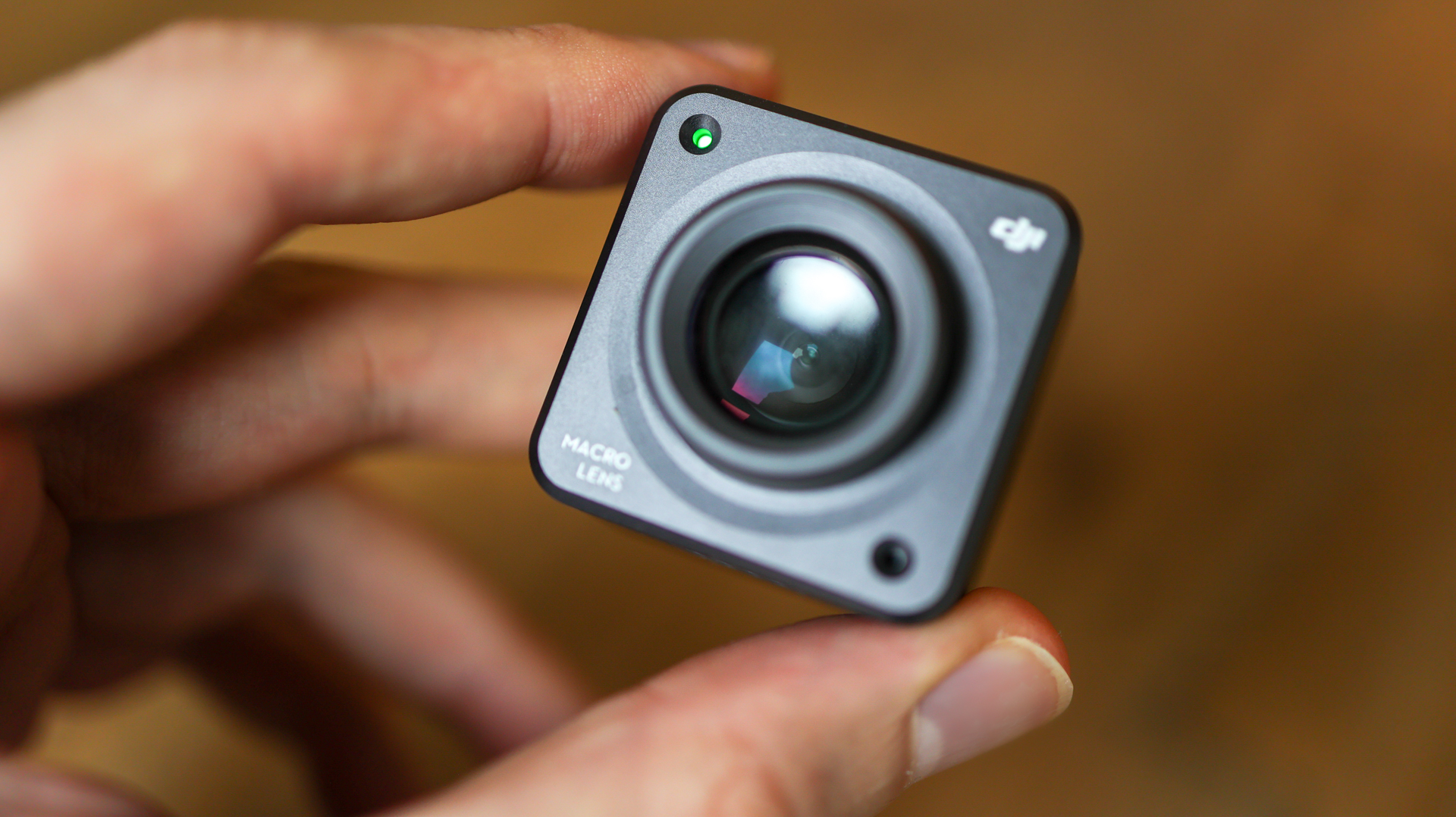
Photos are captured at 12MP on the Action 2, while 16:9 video is shot at 1080p (the frame-rate options are 24/25/30/48/50/60/100/120/200/240p), 2.7K (24/25/30/48/50/60/100/120p) and 4K (24/25/30/48/50/60p). If you want to capture 4:3 video, you can at up to 4K, however the frame rate caps out at 60fps.
Horizon Steady, the fun mode which lets you tilt the Action 2 pretty much 180 degrees, beating out the GoPro’s 45 degrees, is only available when shooting 1080p or 2.7K in 16:9.
Video and image quality
Action cameras aren’t generally known for their DSLR-grade image quality. That’s not to say we weren’t mightily impressed by the Hero 10 Black, and everything GoPro eked out of its tiny sensor. But between electronic stabilization and the small camera module, we’ve learned not to expect too much. This is important context when reviewing the DJI Action 2.
The camera features a wider angle than the Hero 10 Black, and so, punching into an object generally leaves it looking softer. This is great for expansive shots, but less so if you’re shooting in a bright environment and want to shoot across the camera’s standard, wide and ultra-wide field of views.
Colors across photo and video are generally muted, with the DJI Action 2 taking a more cinematic approach to saturation and vibrancy. This actually works against the camera for the most part, though. Photos deliver a lackluster, at times underexposed, dreary quality which can’t stand up to SuperPhoto on the Hero 10 Black, and even with some editing, it’s a struggle to make snaps from both cameras reach a point of color parity.
Video is a similar story, but less extreme. The DJI Action 2 treats colors differently, delivering more realistic hues than those from most of the competition. If you like editing video, there’s a good chance you’ll prefer the footage from the Action 2 as the saturation hasn’t been artificially ramped up. Having said that, we did find the contrast to be a touch on the high side – if indeed DJI was going for the purely cinematic effect.
While footage captured in bright environments looks great, therefore, and gives you plenty of wiggle room in your edit, middling light scenes look like they’ve had a Melancholia filter slapped on them, and low-light is never a good look on an action camera.
Speaking of low light, the DJI Action 2 competes closely with the Hero 10 Black, and betters it in terms of realism. The camera doesn’t try and boost exposure as much, which ultimately results in a more pleasing image, even if less is discernible.
In dim scenes, the Hero 10 Black’s stabilization counters handshake a bit better, producing less image juddering. That said, if you keep both cameras stationary, we actually prefer the low-light footage captured on the Action 2.
Stabilization in general on the DJI Action 2 is strong, with the camera better able to handle heavy steps thuds than the Hero 10 Black, but worse at erratic pans. DJI’s new Horizon Steady is also absolutely excellent, only matched or bettered by 360-degree cameras like the GoPro Max. While the resolution is capped at 2.7K might irk some – we would have liked a 4K option even if it was stripped back to 45 degrees like on the Hero 10 Black, the Action 2 is still great on this front.
As for sound recording, we were impressed for the most part, with the DJI Action 2 capturing similar quality audio to the Hero 10 Black. At times, it was less sensitive, while at others, it was more so – it was definitely worse at suppressing wind noise.
Also of note, unlike the new GoPros, there’s no mod attachment that boosts sound recording or supports external audio, which does feel like a bit of an oversight.
App, storage and battery performance
As with other DJI tech, the Action 2 talks to your Android or iOS device by way of the Mimo app, which connects to the camera over Bluetooth and Wi-Fi. With it, you can control your Action 2, and get a live preview of what it sees on your smartphone or tablet screen. Set-up is simple, and we found pairing to be straightforward.
The 32GB storage on the Action 2 is more than you get on other action cameras, so while it sounds paltry, it’s important to note that it’s better than nothing; nothing being the industry standard. That means out of the box, you’re good to start recording, which is excellent.
Unlike other action cams, though, the Action 2 doesn’t take a microSD card – or at least not without its Display or Power module. The solution is a bit clumsy – it won’t take long to fill up the onboard storage, and switching between SD card and internal recording on the fly can take you out of the action. What’s more, if you disconnect a module mid-recording, you end up with a corrupt file. Still, given how good the magnetic system is, there’s no danger of that happening accidentally.
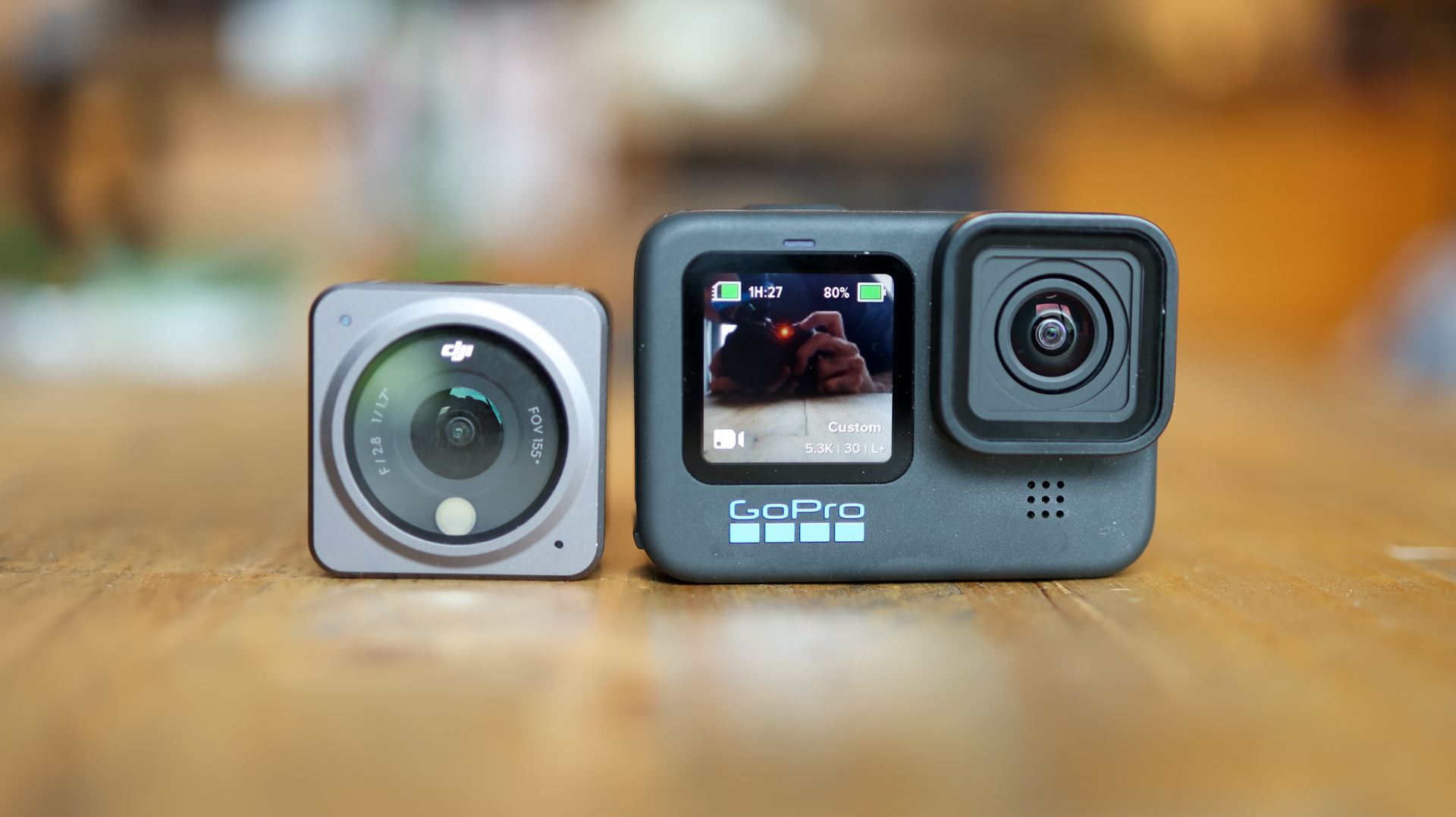
The battery of the DJI Action 2 is not great, which is why it comes with a battery module in the box. Unfortunately, in our time with the camera, we couldn’t run down the battery owing to overheating.
Without any modules attached, the Action 2 stopped recording at 4K 60fps after 5m 45s, with the battery dropping to 79%. Shooting at 2.7K/60p stopped at 6m owing to overheating, and drained the battery to 79%. Shooting at 1080p gave us a little extra time, recording for 7m 24s and leaving 80% battery left in the tank. Thankfully, DJI has a Power Reserve mode, which recorded for more than 20m before shutting down, but this is capped at 1080p.
The DJI Action 2 is therefore not a long-clip capture tool if you value high resolutions. It’s a handy, smart, modular video camera that’s great for shooting anything from 15s to five-minute clips, but anything more and you’ll be running into problems.
Should I buy the DJI Action 2?
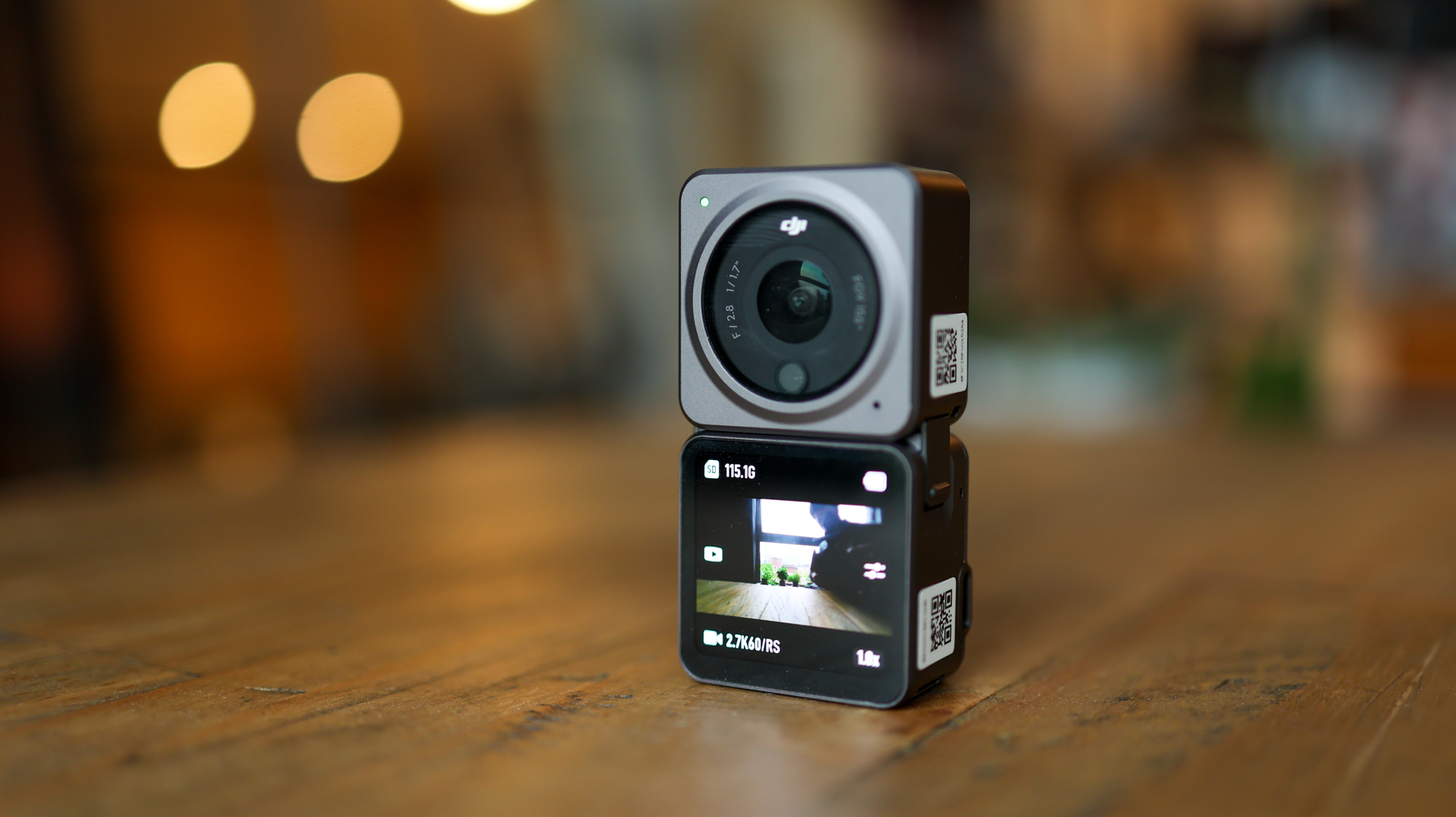
Buy it if...
You want the smallest, smartest-looking action camera around
With its modular design, incredibly compact form, premium finish and altogether brilliant in-hand feel, we love using the DJI Action 2 even if its footage doesn’t always beat out the competition.
You prefer flatter desaturated footage from your action camera
The DJI Action 2 adopts the color profile DJI generally goes for across its drones – more realistic and less saturated. This won’t appeal to all, but filmmakers looking to edit up their footage rather than scale back the processing will appreciate it.
You want the widest angle possible
At 155 degrees, the DJI Action 2 features a wider angle than the 132-degree field of view GoPro Hero 10 Black. This means it gets more in frame, and could make it the better choice for ultra-wide landscapes and all-encompassing footage.
Don't buy it if...
You like to shoot long clips
The DJI Action 2 overheats after around 5 minutes when shooting 4K. We also found this to be the case at 2.7K resolution as well, and even 1080p recording can shut the camera down. In turn, the Action 2 is a great little thing to grab clips, but it definitely isn’t your choice for lengthy shoots.
You like social-media ready, rich-looking footage
The danger of a camera scaling back vibrancy, saturation and general pop and punch is that results need editing to look exciting. Photos and videos from the DJI Action 2 lack that pizazz other cameras can capture, especially in dimly lit environments.
You want external audio options
Unlike GoPro with its Media Mod, the DJI Action 2 doesn’t support external audio recording. While the microphones aren’t bad per se, there’s every chance you’ll want to boost sound quality, especially if you’re vlogging. In turn, the Action 2 forces you to use an external recorder and match up the audio and video in your editing suite, adding to the workload.
- These are the best action cameras you can buy right now
0 comments:
Post a Comment